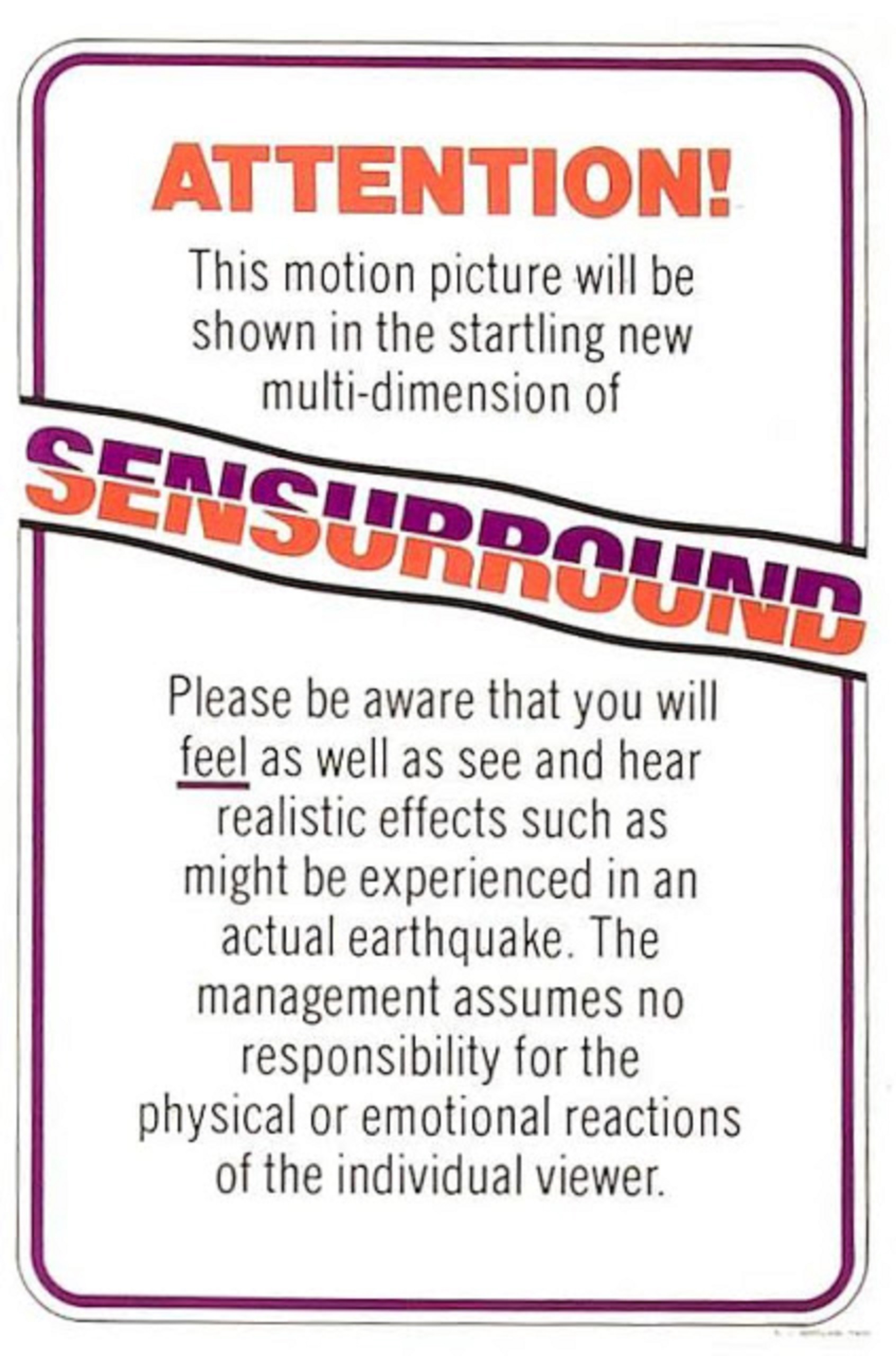
In a world where the movie spectacle is king, movie studios are constantly looking for ways to fill the local multiplex. In 1974, Universal Pictures released the much-hyped disaster movie Earthquake featuring Sensurround, a new technology that promised to put the audience right smack in the middle of an earthquake that devastates Los Angeles, starring Charlton Heston. Earthquake earned the 1974 Academy Award for Best Sound, and the developers of the technology earned a special Academy Award for Scientific and Engineering Achievement.
Basically, the Sensurround system employed up to twenty folded horn-loaded speakers that went as low as 16Hz, producing volumes as high as 120dB. Further refinements sent the practical recorded low-end as low as 10Hz. You can’t hear these frequencies, but you can feel them.
At the time, there was no practical way to record frequencies below 38Hz onto a film’s soundtrack so a pseudo-random noise generator using reference recordings from an actual 1971 Los Angeles-area earthquake created the low-frequency rumble.
Even though Universal only released five films using the technology (Earthquake, Midway, Rollercoaster and two Battlestar Gallactica releases), Sensurround paved the way for today’s multi-channel Dolby and DTS soundtracks as engineers figured out how to separate the dialogue channel from the low-frequency sound effect channel.
Rival studios had their own versions: 20th Century Fox released one film in their Sound 360 format in 1977, and Warner Brothers had a successful run of films in 1980 and 1981 (Altered States, Outland, Wolfen, Superman II) employing their Megasound format, but the release of Star Wars in 1977 proved that audiences would flock to see a picture without the extended sound effects if the story and film were compelling. This more than anything marked the beginning of the end for Sensurround.
Theaters had to rent the special equipment designed and built by Cerwin-Vega and BGW Amplifiers for $2000. The first two rows of seats, as well as seats in each of the rear corners had to be removed making the format an expensive proposition for theater owners. Despite the obstacles, when the movie Midway was released in 1976 in a slightly less aggressive version of the format, there were around 800 Sensurround theaters in the US. The format was popular with movie audiences, and MCA even offered the blueprints for theater owners to build their own systems, reducing the cost of shipping and installation, making the format even more appealing. But it was the multiplex theater that eventually killed Sensurround. Movie-goes in adjacent theaters simply did not want to pay money to have their movie experience interrupted by the low-frequency rumble next door.
Even with its short life, Sensurround deserves some mention simply as a technical achievment. So, this Subtember as you crank up those subwoofers and immerse yourself in the glorious sounds of your home theater, pay homage to the audio pioneers of the 1970s who paved the way for all that LFE you’ve come to expect from your movies.



